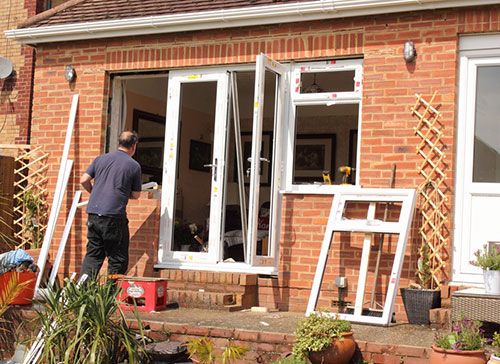Windows aren’t just the way you see out of your home. They affect your enjoyment of your home, not just because of their decorative effect, but also because of their soundproofing. Windows also affect your pocketbook, because their energy efficiency level affects how much you pay for heating and cooling. Any local double glazing company will tell you that there is a wide range of different glass types available and should be able to point you in the right direction. Here are just a few options to get you started.
Ordinary glass is called clear float glass. It is colorless and lets light pass through clearly.
Tinted and Reflective Glass Options
Tinted glass adds a coloured tint to clear float glass. It’s available in a range of colours, mainly shades of grey, green, and blue. Besides being attractive, tinted glass reduces glare from the sun. Tinted glass doesn’t offer much insulation.
Reflective glass adds a metallic coating to the glass during the manufacturing process, making it highly shiny. Like tinted glass, it doesn’t provide extra insulation. During the day reflective glass prevents people outside from seeing in, but that effect disappears at night.
Eco Friendly Glass Options
Two panes of glass bonded together with an interlayer make laminated glass. The bonding process helps keep the glass from shattering, increasing its safety. Laminated glass eliminates almost all ultra-violet rays, making it a good choice in a room with artwork, furniture, or rugs that need to be protected from fading. Laminated glass can also be tinted or reflective glass, giving it style options as well.
LowE or low emissivity glass adds a thin coating of metal on the glass surface. The metal coating is so thin it’s transparent to people, but it reflects heat and makes the glass an effective insulator. In summer, the glass helps by keeping the outside heat out of the house. In winter, the glass helps by keeping indoor heat inside the house.
Like laminated glass, double glazed glass bonds two panes together. Rather than an interlayer, double-glazed glass bonds the pieces to a spacer. The spacer is often filled with argon gas, which increases the glass’s insulating effectiveness. Double-glazed glass has the best insulating properties of the glass types described here, blocking more than 80% of the sun’s rays. Double-glazed glass can be made from any of laminated, low-e, tinted or reflective glass. For more information on double glazing companies that can provide this type of glass you can see UPVC Conservatories UK where you will find a list of UK glazing companies. It is also important to consider the accreditations which some of these companies have from bodies such as FENSA which will give you added piece of mind that their work has been tried and tested.
Depending on which room the window is in, you may need to consider other factors as well. For some rooms, like bathrooms, you may want to use textured glass to let in light but maintain privacy. Sometimes letting the sun shine in reveals more than you want to!
